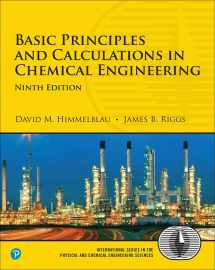
Basic Principles and Calculations in Chemical Engineering (International Series in the Physical and Chemical Engineering Sciences)
Book details
Summary
Description
This best-selling introductory chemical engineering guide has been thoroughly revised, streamlined, and updated to reflect today’s sweeping changes in chemical engineering curricula. It contains extensive new coverage and examples related to biotechnology, nanotechnology, green/environmental engineering, and process safety, as well as many new MATLAB and Python problems throughout.
Like previous editions, Basic Principles and Calculations in Chemical Engineering, 9th Edition offers a strong foundation of skills and knowledge for successful study and practice, guiding students through formulating and solving material and energy balance problems, as well as describing gases, liquids, and vapors. Throughout, it introduces efficient, consistent, student-friendly methods for solving problems, analyzing data, and gaining a conceptual, application-based understanding of modern chemical engineering processes.
Coverage in previous editions has been condensed and streamlined to serve today’s students and faculty more effectively. Two entirely new chapters have been added, presenting complete introductions to dynamic material and energy balances, and to Psychrometric Charts.


We would LOVE it if you could help us and other readers by reviewing the book
Book review



